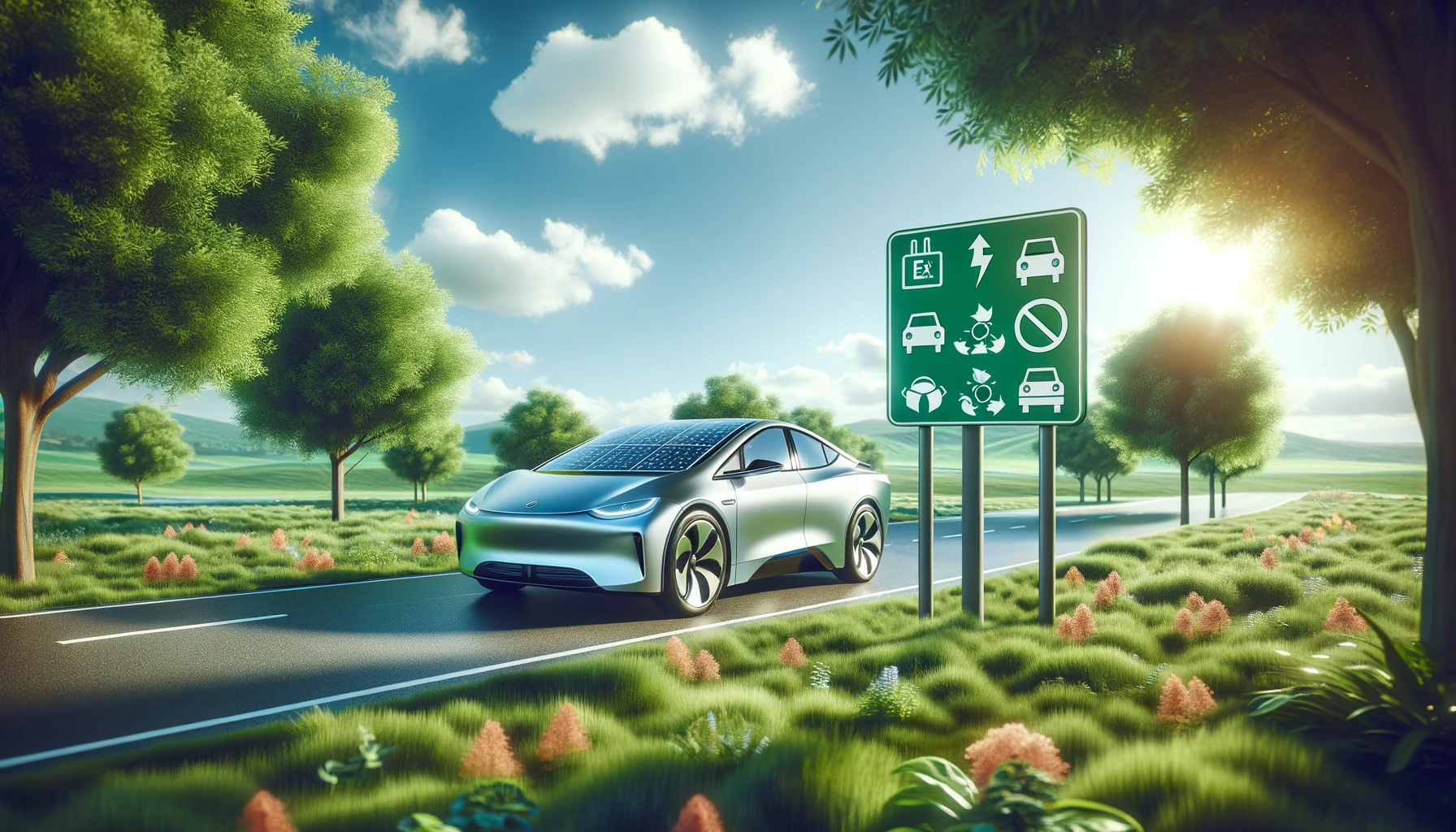Understanding Smog and Air Pollution
Smog and air pollution are significant environmental issues that pose serious threats to human health and the ecosystem. Smog is primarily characterized by a mixture of smoke and fog, leading to a thick haze that limits visibility and creates unsafe respiratory conditions. Air pollution, on the other hand, refers to the presence of harmful substances in the atmosphere, resulting from various sources including vehicle emissions, industrial discharges, and natural phenomena. The primary pollutants contributing to smog and air pollution include particulate matter (PM), nitrogen oxides (NOx), sulfur dioxide (SO2), and volatile organic compounds (VOCs).
One of the main culprits of air pollution is transportation, specifically the emissions from fossil fuel-powered vehicles. These vehicles emit significant amounts of CO2, NOx, and particulate matter, which contribute directly to smog formation, especially in urban areas with high traffic density. Increased vehicular emissions exacerbate the air quality issues already prevalent in many cities, leading to a cycle of pollution that affects not only the environment but also the health of the population. Individuals exposed to high levels of air pollution can experience respiratory problems, cardiovascular diseases, and other chronic health issues.
The urgency of addressing smog and air pollution is underlined by the growing concerns surrounding climate change and public health. As urban populations expand and vehicle ownership increases, the potential for worsening air quality becomes even more pronounced. It is vital to understand that effective measures must be taken to mitigate these emissions and transition towards cleaner alternatives, such as electric vehicles. By reducing reliance on fossil fuel-powered transportation, cities can significantly lower pollutant concentrations, ultimately leading to improved air quality and healthier living conditions.
The Role of Electric Cars in Combatting Air Pollution
Electric cars represent a significant shift away from traditional gasoline-powered vehicles, primarily through their operational mechanisms. Unlike internal combustion engine vehicles, electric cars are powered by electric motors, which produce zero tailpipe emissions. This fundamental difference plays a crucial role in the reduction of pollutants that contribute to air quality degradation, such as nitrogen oxides (NOx) and particulate matter (PM).
Statistics substantiate the advantages of electric vehicles (EVs) in combatting air pollution. According to the U.S. Environmental Protection Agency (EPA), transportation accounts for approximately 29% of total greenhouse gas emissions, with cars and trucks being among the leading sources. To address this, electric cars can deliver significant reductions in emissions. For instance, studies indicate that electric cars generate, on average, 50% fewer greenhouse gases than their gasoline counterparts over their lifetime, especially when charged from power grids incorporating renewable energy sources.
Furthermore, a research report by the International Council on Clean Transportation demonstrated that regions with higher EV adoption rates experience decreased levels of nitrogen oxides and particulate matter. In urban areas where smog tends to accumulate, the transition to electric vehicles can lead to notable improvements in air quality, benefiting public health and the environment. Areas like Los Angeles and San Francisco, which have implemented incentives for EV adoption, have observed a marked decline in levels of these harmful pollutants.
In summary, the unique operational characteristics of electric cars enable them to contribute significantly to the reduction of air pollution. By minimizing emissions of harmful toxins, electric vehicles not only help mitigate smog formation but also play a vital role in fostering healthier urban environments. As the shift towards electrification continues, the potential for improved air quality becomes increasingly tangible.
Case Studies: Cities That Have Benefited from Electric Vehicles
Several cities around the globe have witnessed remarkable improvements in air quality attributed to the introduction and increased adoption of electric vehicles (EVs). These case studies highlight the positive impact of EVs on smog reduction and overall environmental health.
One notable example is Los Angeles, California. Historically notorious for severe smog due to vehicle emissions, Los Angeles has made a concerted effort to transition to electric transportation. In recent years, the city implemented initiatives aimed at increasing the number of electric taxis, buses, and personal electric cars on its roads. According to data from the South Coast Air Quality Management District, the average levels of nitrogen dioxide (NO2) in the air have decreased significantly since the push for electric vehicles began, with a reported drop of approximately 30% over the last decade. Local residents have noted a marked improvement in their breathing and overall comfort in outdoor spaces.
In Europe, Oslo, Norway, offers another compelling case. The city has embraced electric mobility, providing extensive charging infrastructure and incentives for EV ownership. As a result, electric cars now represent over half of new vehicle sales. Air quality measurements taken before and after the rollout indicated reductions in particulate matter (PM10) levels by nearly 25%. Officials in Oslo have praised the transition, stating that it has made the city noticeably greener, and many citizens have expressed satisfaction with the cleaner air quality, particularly in densely populated areas.
Moreover, Shenzhen, China, serves as a successful model for electric public transportation. The city entirely replaced its fleet of over 16,000 buses with electric alternatives, resulting in a reported 40% reduction in air pollutants. Local officials have documented not only enhanced air quality but also improved public health outcomes. Residents have voiced their appreciation for the quieter, healthier urban environment, contributing to enhanced community well-being.
These case studies exemplify the tangible benefits of electric vehicles in urban settings. Cities that adopt EVs often witness improved air quality, better public health, and increased satisfaction among residents, demonstrating the crucial role of electric vehicles in combating air pollution.
Future Prospects and Challenges Ahead
The future of electric vehicles (EVs) is poised to play a pivotal role in enhancing air quality and reducing pollutants that contribute to urban smog. As technology continues to advance, electric cars are becoming more efficient and accessible. The integration of new battery technologies promises longer ranges and reduced charging times, which can increase consumer adoption rates. Innovations in solid-state batteries, for example, could address some existing concerns regarding battery longevity and environmental impact, making electric vehicles an increasingly viable choice for the average consumer.
Infrastructure developments are equally critical in this equation. The expansion of charging networks is essential to alleviate range anxiety, encouraging the widespread use of electric cars. Governments and private sector stakeholders are investing heavily in charging stations, not only in urban centers but also in rural areas. Enhancing the charging infrastructure will ensure that electric vehicle owners have convenient access to power sources, further normalizing the use of these environmentally friendly transportation options.
In terms of policy, various regions are implementing incentives to encourage electric vehicle adoption. These incentives often take the form of tax breaks, rebates, or reduced toll costs, making the purchasing decision more favorable for potential buyers. Furthermore, policies aimed at promoting renewable energy sources to power these vehicles are crucial. A clean energy grid would optimize the environmental benefits of electric cars, ensuring that the emission reductions achieved from driving an EV are not offset by the pollution from fossil fuel-generated electricity.
However, challenges remain. The environmental impact of battery production, particularly lithium mining, poses serious concerns that must be addressed. Additionally, the dependence on a reliable and robust energy grid, which is still in development in many areas, could limit the widespread adoption of electric vehicles. These hurdles must be effectively navigated to harness the full potential of electric cars in combating air pollution and improving public health going forward.


No responses yet